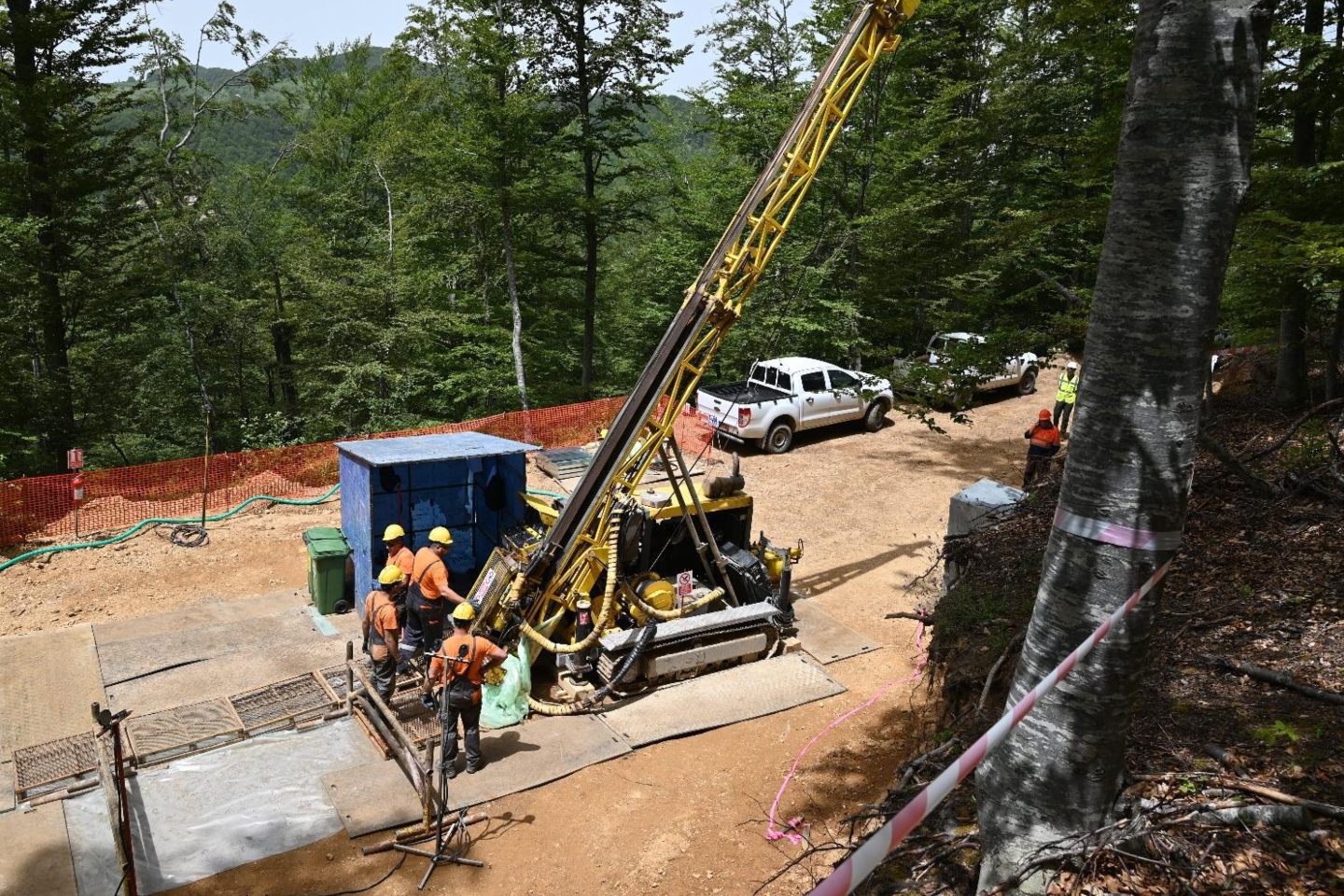Strickland Metals has launched into a new exploration campaign at its 5.44 million-ounce gold equivalent Rogozna project in Serbia, with two rigs kicking off a planned 60,000m of drilling and another two on the way. The infill, extensional and scout probing strategy devised by the company will be the biggest program ever committed to the project.

Strickland Metals has launched into a new exploration campaign at its 5.44 million-ounce gold equivalent Rogozna project in Serbia, with two rigs kicking off a planned 60,000m of drilling and another two on the way.
The infill, extensional and scout probing strategy devised by the company will be the biggest program ever committed to the project. Strickland expects to complete a 100 per cent ownership deal for Rogozna on July 1.
While the first two rigs will initially focus on increasing Strickland’s confidence in and extending the skarn-hosted mineralisation at the Shanac resource, which remains open to the north, east and at depth, some of the program metreage is also allocated to other sites within the greater Rogozna project area. About 35,000m of drilling is proposed to upgrade the existing Shanac and Copper Canyon mineral resource estimates and also to establish estimates for the Medenovac and Gradina deposits within a year.
The remaining 25,000m of drilling is slated to test other multiple high-priority copper-gold porphyry targets in four main categories, in areas where previous drilling identified significant mineralisation. They include Copper Canyon, 1.7km south of Shanac, Cesme, which is 5.5km north/north-west of Shanac and Jezerska Reka, a smaller, but strong soil arsenic anomaly of more than 100 parts per million that lies 7.5km south-west of Shanac.
Management has identified other targets, such as at Kotlovi and Red Creek, near known deposits, but they have only limited or no previous drilling.
Additionally, new and untested targets with no known nearby mineralisation such as Obradov Potok, which sits 3.8km south-west of Shanac, will be subject to initial exploration. It is right in the middle of a solid soil arsenic anomaly of more than 100ppm and about 3km in diameter, which is supported by a halo of greater than 20ppm arsenic.
Other scout drilling will prioritise areas exhibiting strong copper-gold porphyry pathfinder mineralisation.
Strickland Metals chairman Anthony McClure said: “The 2024/25 drilling program at Rogozna will be the largest-ever exploration drilling program undertaken at the Project. In the coming weeks, we will have four diamond rigs drilling 24/7, with multiple geophysical survey crews mobilising shortly as well.”
googletag.cmd.push(function() { googletag.display('bn-dfp-article-lb2-advert'); });McClure said the Shanac drilling had been designed to better define the high-grade core of the deposit and the results will be fed into ongoing mining studies.
Some 7000m of infill drilling is planned at Shanac to allow the domaining of higher-grade zones in a bid to fully define and elevate a core part of the resource to a level that would justify earliest possible mining studies.
The company has already identified a high-grade core zone between 150m and 450m vertical depth at Shanac, averaging an impressive 14,000 gold equivalent ounces per vertical metre. In some places, it exceeds 20,000 gold equivalent ounces per vertical metre.
Another 3000m of drilling is intended to extend the existing deposit, prioritising prospective northern and north-eastern areas where current drilling is thin or has not yet been shown to have connectivity or continuity. The project’s potential is highlighted by historic high-grade intercepts that include two results from separate holes – 408.9m at 1.4 grams per tonne gold equivalent from 193.8m and 236.4m going 1.8g/t from 125.5m.
Rogozna is a large-scale gold-copper-zinc system in southern Serbia, with more than US$40 million (AU$60.62 million) spent on exploration to date. It lies in the Serbian Cenozoic igneous province within the globally-significant Tethyan metallogenic belt.
The tenure comprises four exploration licences covering about 184 square kilometres and is owned by local company Zlatna Reka Resources – an Ibaera Capital subsidiary.
The project contains a JORC-compliant combined inferred mineral resource totalling 5.44 million ounces of gold equivalent containing 2.96 million ounces gold, 214,000 tonnes of copper and 364,000 tonnes of zinc.
It is also interesting to note that Serbia is one of the world’s most attractive mining countries, with an established mining industry, a long history of large-scale producing assets and many active international mining companies. It is Europe’s second-biggest copper producer.
Strickland remains well-funded, with a hold on some $51.4 million in cash and Northern Star Resources shares as at the end of the March quarter, giving it a solid financial base from which to launch its new exploration mission.
Is your ASX-listed company doing something interesting? Contact: matt.birney@businessnews.com.au

















